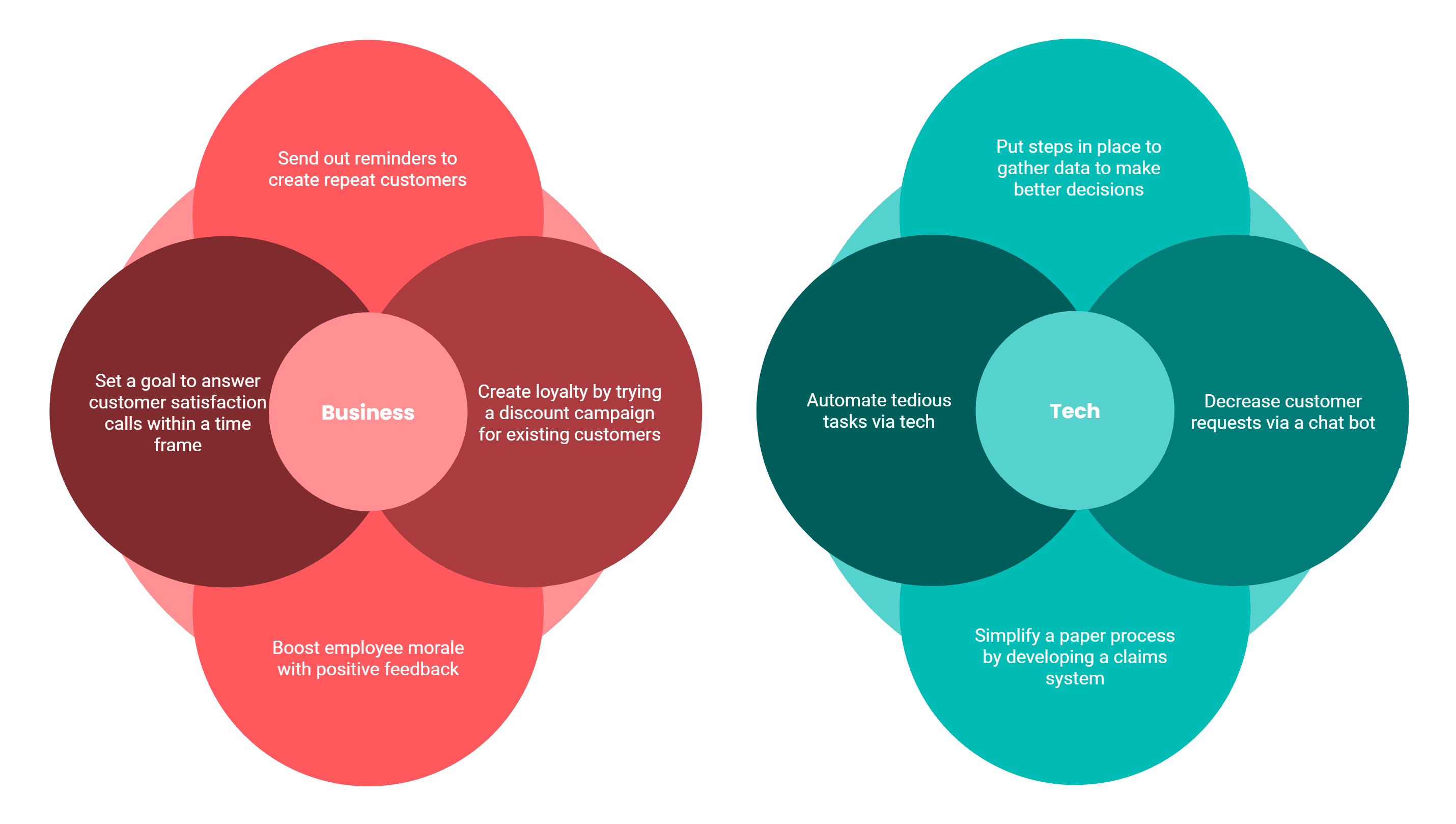We all want to be a part of successful projects. We all especially want those successes to come easily and quickly. Of course, if it were simple to get there, we wouldn’t want it as much.
What if we told you it may be possible to get some big wins without monumental effort in business? Depending on who you are, there may be some victories hiding in plain sight.
These are your low hanging fruit. But what exactly does that mean? And how do you find them? Grab your fruit basket; it’s time to go picking. ?????
Summary
Low hanging fruit is the easiest problem to solve within a larger group. For example, if you’re looking to automate your internal systems, the low hanging fruit would be the easiest process to automate. It’s important to find low hanging fruit, because these issues usually take few resources to fix, and gives you a reasonable benefit.
You can find Low Hanging Fruit by reviewing analytics, looking for bottlenecks, looking from a step back, and asking your team.
Side note: you shouldn’t only focus on low hanging fruit. It’s a great place to start, but you’re only putting out fires (not innovating or growing).
What is Low Hanging Fruit, and Why is it Important?
Low Hanging Fruit is a term that describes any action that you can do quickly and easily to get to a solution. Usually, this means that the low hanging fruit is the easiest problem you can solve. With few needed resources, minimal risk, and decent benefit, Low Hanging Fruit seems like the perfect answer.
It’s important to address low hanging fruit, as it’s usually there thanks to the status quo. If you rely on what’s always been because it’s ‘always been done that way,’ you’ll fall behind rather than stay in the race. By doing some introspection on your business, you may be able to make quick changes that keep you afloat.
And what are the benefits of addressing low hanging fruit? If you decide to disrupt yourself a little bit, there are many benefits, including, but not limited to:
- Reaching targets more quickly
- Making rapid (but calculated) judgments
- Increasing your number of sales
- Having a consistent flow of leads
- Short-term rapid growth
However, it’s important to remember that you’ll need a mix of the lows and highs; if you only do what’s easy, you’ll never get out of your comfort zone. While this allows you to survive, you won’t be able to thrive.

How do you Find Low Hanging Fruit?
Now that you’ve got a step-stool and bucket, it’s time to figure out how you’re getting the fruit off the trees. How do you determine what the low hanging fruit in your organization is, and which to tackle first?
Start capturing analytics data
The best thing you can do is backup a decision with evidence. When you go to make choices, it’s better to have data on what’s best as opposed to only using opinions. Before you can go out on your low-fruit journey, you’ll need to have the data collected. Start capturing information now, so that you can have everything you need when you go hunting.
Bottleneck analysis
Think about your current process at work: what activity takes you and your team the longest? If this task is important to your business and several people do it several times a day, it may be your best bet to start there. Find the biggest bottleneck, and address issues there.
Related Article: The Ugly Realities of Software Development
Think like a startup
Now we don’t mean start over from the beginning of your organization. When trying to find things that can easily be fixed, you’ll want to have the open-mind of a new founder. This means being lean, thinking innovatively, not being afraid of mistakes, and stepping outside of your comfort zone. Once you’re in a new mindset, you’ll be able to look at your issues from a new light.
Just ask
Sounds too easy, right? But finding your easiest problems to solve can be as simple as asking your groups what issues they have. Ask your team what the most tedious and time-consuming part of their day is. Ask customers what they like and don’t like about working with you. Talk to other industry-members about issues they’ve addressed. By hearing from others, you’ll be able to see what’s affecting the most people.
Examples of Low Hanging Fruit
But why do all that work we just mentioned when we can just tell you some examples! ? We’re kidding of course; you’ll need to do your own research to find our what’s best for you. However, It doesn’t hurt to get the ball rolling and see what others have done.

Conclusion
Low hanging fruit is any solution that you can quickly and easily implement. It’s important to address these things, as they can be the problems that drag you under.
You can find low hanging fruit by doing your research: gather data, talk to your stakeholders, and think outside the box.
Whether you like Spring strawberries, Summer watermelon, or Fall apples, addressing your easiest issues are in season all year long. So get on the tractor, and bring in that produce! ?




